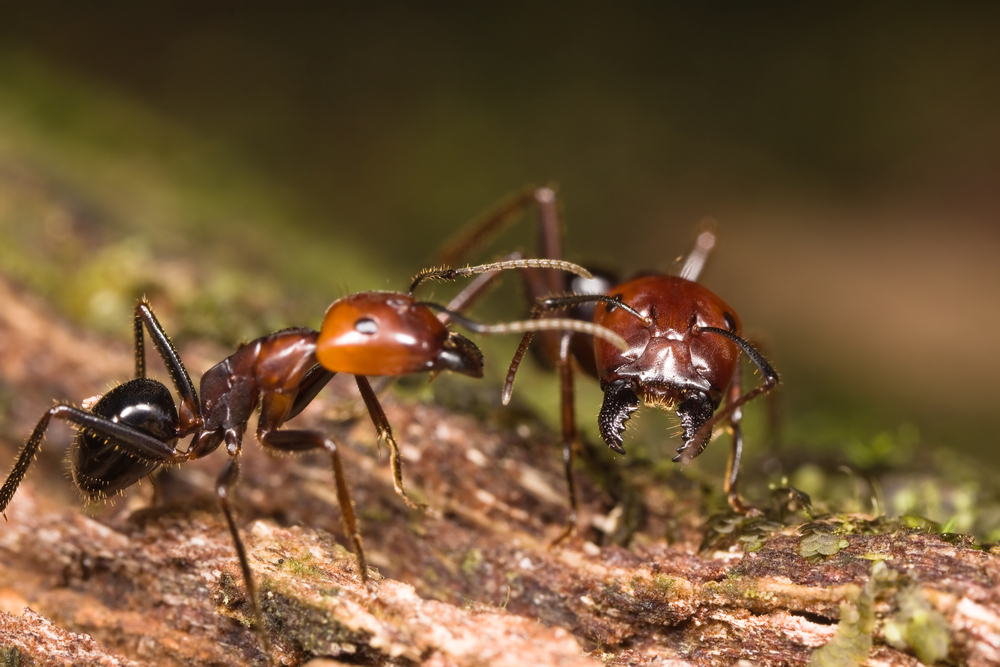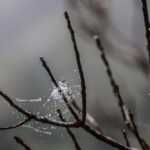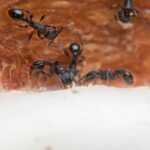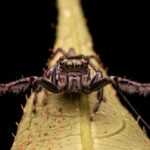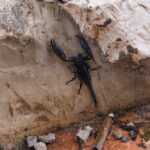Big Headed Ants: Identification, Risks, and Control Solutions
Big-headed ants, or Pheidole megacephala, are invasive species known for their large heads and aggressive nature. They can outcompete native species and disrupt ecosystems. This article explains how to spot these ants, the dangers they bring, and how to control them.
- Big-headed ants are invasive species known for their aggressive behavior and ability to establish colonies in disturbed habitats, threatening local ecosystems and biodiversity.
- Identification of big-headed ants relies on their distinct physical characteristics, including size variations among workers and notable features like their large heads and propodeal spines.
- Effective control and prevention strategies involve eliminating nesting areas, sealing entry points, and utilizing professional pest control services with targeted baits and non-repellent insecticides.
Understanding Big Headed Ants
Big-headed ants, also known as Pheidole megacephala, have a fascinating yet concerning history. Originating from Africa, these bigheaded ants have spread across the globe, primarily due to human activities such as trade and travel. Their ability to adapt to various environments makes them one of the most successful invasive species.
Classified as tramp ants, big-headed ants are known for their invasive tendencies. They can establish colonies in disturbed habitats, often outcompeting and displacing native ant species. This competitive edge enables them to dominate new areas, resulting in significant ecological disruptions.
The global spread of big-headed ants has led to their presence in numerous regions, where they pose a threat to local biodiversity. Their aggressive behavior and ability to thrive in various environments make them a formidable pest that requires vigilant monitoring and control efforts.
Physical Characteristics of Big Headed Ants
Big-headed ants exhibit distinct physical characteristics that make them easily identifiable. They have two forms of workers: minor and major workers. Major workers, also known as soldiers, are significantly larger, with heads measuring 3 to 4 mm, while minor workers are about 2 mm in length. This size difference plays a crucial role in their colony structure and functioning.
Both major and minor workers possess short propodeal spines that point nearly upward, and their bodies are covered in sparse, long hairs. A characteristic dark spot can often be seen on the underside of their gaster, and their antennae consist of twelve segments with a distinct three-segmented club. These features, along with their disproportionately large heads, make them stand out among other ant species in the hyperdiverse ant genus, including the minor worker.
Recognizing these physical traits is essential for identifying big-headed ants and distinguishing them from native ant species. Their unique appearance, especially the large heads of the major workers, serves as a clear indicator of their presence.
Habitat and Nesting Behavior
Big-headed ants thrive in disturbed habitats, making them a common sight in areas like lawns, under objects such as bricks and pots, and near structures. They are particularly adept at nesting in disturbed soils and expanding their populations by following the edges of lawns, walkways, and roadways. This behavior allows them to quickly colonize new areas, often at the expense of native ants.
Signs of nesting activity include displaced soil and noticeably loose sandy soil piles along lawn edges, indicating nest sites. These nests can be extensive, with multiple queens and a large number of workers. The presence of these nests is a clear sign of an established big-headed ant population.
Understanding the nesting behavior and preferred habitats of big-headed ants is crucial for effective control and prevention. Targeting these nesting sites allows homeowners to take proactive measures to manage and reduce ant populations.
Foraging and Feeding Habits
Big-headed ants are omnivorous, displaying a diverse range of foraging behaviors to sustain their colonies. They primarily feed on sweet liquids, dead insects, and soil invertebrates. This varied diet allows them to thrive in different environments and maintain large colonies.
Their foraging patterns often lead them indoors, where they seek high-protein food sources. Big-headed ants are known for their ability to quickly recruit nestmates to a food source through effective foraging techniques. This behavior can result in large numbers of ants invading kitchens and other areas where food is stored.
Managing food sources and understanding the foraging habits of big-headed ants are essential for controlling their populations. Eliminating potential food sources and maintaining cleanliness reduces the likelihood of indoor infestations.
Life Cycle and Colony Structure
Big-headed ants undergo complete metamorphosis, which includes the egg, larval, pupal, and adult stages. The incubation time for eggs ranges from 13 to 32 days, followed by a larval stage lasting between 23 and 29 days. The pupal stage can vary from 10 days to over 20 days, depending on environmental conditions. This life cycle allows for rapid colony growth and expansion.
Colonies of big-headed ants are extensive, consisting of thousands to millions of individuals. These ant colonies feature major workers, minor workers, and worker ants. The presence of multiple fertile queens enhances their reproductive potential, allowing for the establishment of new colonies. Fertilized queens shed their wings to establish new nests after mating.
Queens of big-headed ants can lay up to 292 eggs per month, contributing to the rapid growth of their colonies. This high reproductive rate, combined with the presence of numerous queens, enables big-headed ants to form virtually continuous supercolonies. Knowledge of their life cycle and colony structure aids in effective control and management.
Impact on Native Species
Big-headed ants are known for their aggressive competition with native ant species, often leading to the displacement of native ant species in local biodiversity. Their ability to establish large colonies and outcompete native ants can significantly alter local insect populations and disrupt sustainable ecosystems. This displacement of native species can have far-reaching ecological consequences.
In agricultural settings, big-headed ants can protect harmful pest species like aphids, which exacerbate crop damage. Their presence can therefore have a direct impact on agricultural productivity and pest management efforts.
The invasive nature of big-headed ants highlights the importance of monitoring and controlling their populations to protect local ecosystems and very successful invasive species introduced ant native species. Understanding their impact allows for proactive measures to mitigate their effects.
Signs of Infestation
Recognizing the signs of a big-headed ant infestation is crucial for early intervention. These ants exhibit erratic foraging behaviors, unlike most other ant species that typically follow set trails. This unpredictability can make it challenging to detect infestations early on.
One key indicator of an infestation is the presence of piles of discarded insect remains, known as ‘boneyards’. These piles consist of soil, debris, and remnants of dead insects and are often found near nesting sites. The combination of erratic foraging patterns and the presence of boneyards is a clear sign of a big-headed ant infestation.
Early identification of these signs enables prompt action, preventing further spread and damage to control big-headed ant populations.
Health Risks Associated with Big Headed Ants
While big-headed ants are not commonly known as vectors for diseases, they can still pose health risks. Individuals allergic to ant proteins may experience reactions such as swelling and itching from bites or contact. Additionally, secondary bacterial infections can occur from scratching ant bite sites, emphasizing the need for cleanliness.
Big-headed ants can also carry pathogens like Salmonella and E. coli from unsanitary environments, although this is less common. The presence of these ants in living areas can lead to psychological stress for homeowners due to the sight of numerous ants.
Awareness of these health risks underscores the need for controlling big-headed ant populations and maintaining a clean living environment.
Prevention Strategies
Preventing big-headed ant infestations requires proactive measures. One effective strategy is to eliminate potential nesting areas by moving firewood and debris away from the house. This reduces the likelihood of ants establishing nests near structures.
Sealing cracks and gaps around doors and windows with caulk can help prevent big-headed ants from entering your home. Maintaining moisture control is also important, as damp environments attract these ants. Regular inspection and maintenance are key to preventing infestations.
Implementing these prevention strategies helps reduce the risk of infestations and maintain a pest-free environment.
Effective Control Solutions
Professional pest control services are recommended for effective management and prevention of big-headed ant infestations.
Granular baits can target big-headed ants effectively when applied in areas where the ants are active. Regular application of non-repellent insecticides like Phantom and Termidor is also effective, as they allow ants to spread the treatment within their colonies. Creating treatment zones with non-repellent sprays around structures can help manage ant populations infiltrating from outside.
Regular lawn pest control can assist in managing the presence of big-headed ants in outdoor areas. By combining these control solutions, homeowners can effectively manage and reduce big-headed ant populations.
Big-headed ants pose significant challenges to homeowners and local ecosystems. Understanding their physical characteristics, habitat preferences, foraging habits, and life cycle is crucial for effective control and prevention. By recognizing signs of infestation and implementing proactive prevention strategies, homeowners can mitigate the impact of these invasive pests.
Frequently Asked Questions
How did big-headed ants spread?
Big-headed ants primarily spread through the movement of potted plants containing their colonies, which facilitates long-distance dispersal. Their large interconnected colonies further complicate control measures and exclude other ant species from their territories.
What are the ants with the big heads?
The ants with big heads are commonly referred to as big-headed ants, particularly Pheidole dentata and Pheidole megacephala. These species are notable for their distinctive large heads and can be found in various habitats across the southern United States and in Australia, where they pose a threat to native ant species.
Are big-headed ants harmful?
Big-headed ants are not harmful to humans, as they do not sting and only bite when threatened. While they may cause minor damage to lawns and pantry goods, their overall impact is minimal.
What are the key physical characteristics of big-headed ants?
Big-headed ants can be identified by their two forms of workers: major workers with large heads measuring 3 to 4 mm and minor workers around 2 mm long. Both types have short propodeal spines and sparse long hairs, which distinguish them further.
How do big-headed ants impact native species?
Big-headed ants negatively impact native species by aggressively displacing them and altering local insect populations. Their presence can also protect pest species, leading to increased crop damage in agricultural contexts.
